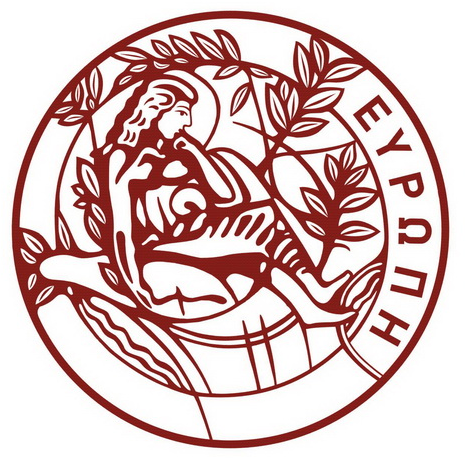PhD Candidate
NIKOLAOS RAFAHL VRITHIAS
nvrithias@materials.uoc.gr
Phone
Office
Personal web page
Title
3D Composite Porous Materials for Environmental Applications
Supervisor
KENANAKIS GEORGIOS, Researcher C, FORTH, Heraklion Crete GREECE
Committee Members
REMEDIAKIS IOANNIS, Associate Professor, Materials Science & Technology Dept. - UOC
KIOSEOGLOU GEORGIOS, Associate Professor, Materials Science & Technology Dept. - UOC
Abstract
The proposed PhD dissertation focuses on the synthesis of 3D ceramic and polymeric nanocomposites enriched with Metal Oxide nanoparticles such as ZnO, TiO2, WO3 etc., as well as, carbon allotropes (graphene oxide, carbon nanotubes etc.) suitable for environmental applications. In recent years, there has been a particularly strong interest in the degradation of a large number of compounds from the main groups of organic substances found in liquid waste, using Metal Oxide nanoparticle such as as ZnO, TiO2, WO3, etc., under artificial or solar light. Several photocatalysts have been extensively studied in the form of powders with successful results, although their great disadvantage is their inability for reuse. At the same time, stabilized photocatalysts have been studied on fixed substrates, in the form of thin films or nanostructures, overcoming the disadvantages of powders in terms of their reuse, both against liquids and gaseous pollutants, although their disadvantage for practical applications is actually their small physical dimensions. A different approximation that has not been studied so far, is the composition of 3D photocatalysts, in large dimensions, in the order of cm, with the active material being either dispersed within the catalyst, or adsorbed on its surface giving the maximum surface-to-volume ration with the pollutants under study. In this way, either ceramic photocatalytic nanocomposites with controlled geometry and porosity, either polymeric ones using 3D printers with an accuracy of a few tens of micro-measures (50-100 μm), providing enhanced photocatalytic properties. The first category of photocatalytic samples allows their use under high pressure and temperature, while the latter have particular elasticity, enabling them to have a variety of applications in daily use. In addition, with the use of 3D printers, one has the possibility to design and manufacture samples in a variety of geometries and dimensions, adapted for applications of outflow and disinfection filters, solvents, etc., giving a new environmental approach. Within the framework of the proposed doctoral thesis, three-dimensional porous materials based e.g. on carbon or ceramic matrices and photocatalytic nanomaterials e.g. ZnO, TiO2, WO3, etc. are fabricated. The effect of the catalyst type and its concentration, as well as the geometry and the porosity of the final ceramic, are studied. The 3D samples are studied against the photocatalytic degradation of organic pollutants under UV and/or visible radiation, e.g. stearic acid similar to typical organic pollutants found outdoors and indoors (a), methylene blue, etc. having characteristic groups found in typical liquid waste of textile industries (b), as well as pollutants with a structure similar to standard insecticides and pesticides used in agriculture. In addition, polymeric filaments of ~1.75mm diameter are formed using the thermal extrusion technique in order to be used in typical 3D printers, and three-dimensional structures are designed and fabricated, in a mm and cm scale, suitable for innovative environmental applications such as photocatalysis/degradation of organic pollutants The proposed research work focuses on the chemical synthesis of nanostructured photocatalytic powders e.g. ZnO, TiO2, WO3, etc. (pure and doped ones), using environmental friendly approaches. The as-grown powders are incorporated into ceramic/polymeric matrices, while their structural, optical and photocatalytic properties will be studied, using X-ray diffraction, FT-IR and Raman spectrophotometry and Photoluminescence, while their mechanical properties are studied under bending and tension tests. Finally, the effect of the geometric characteristics and the porosity of the proposed samples is studied theoretically on their active surface and photocatalytic efficiency, and the theoretical results are compared with the experimental ones in order to fabricate targeted samples/devices with maximum performance.


